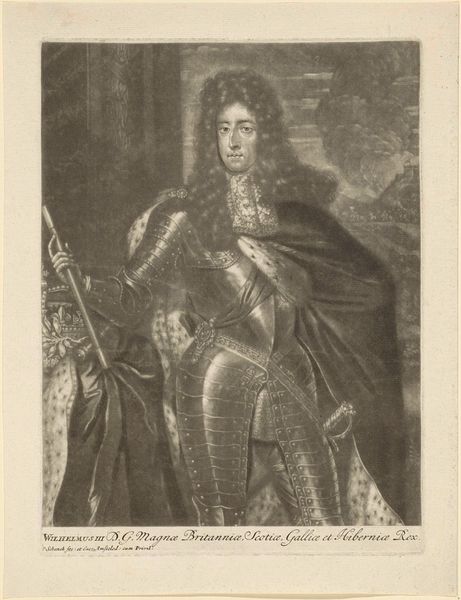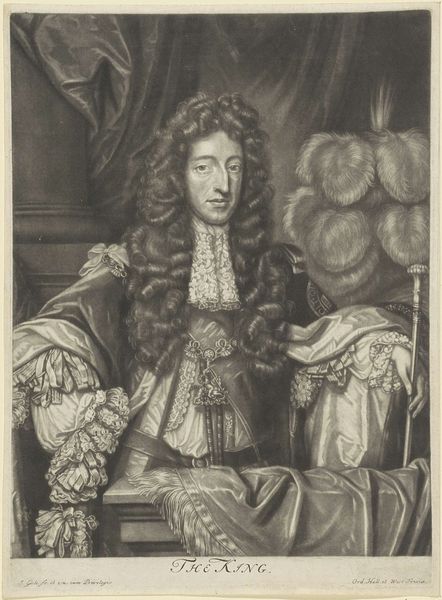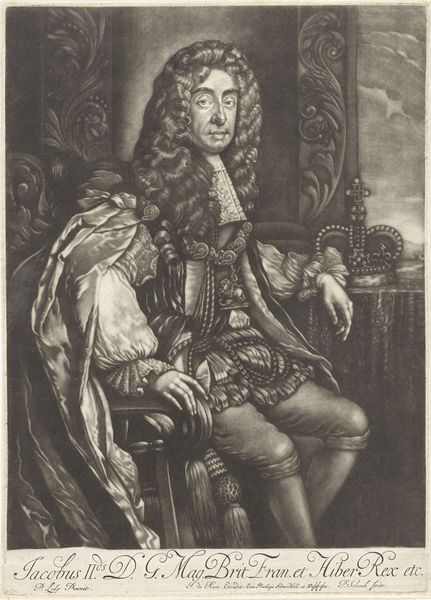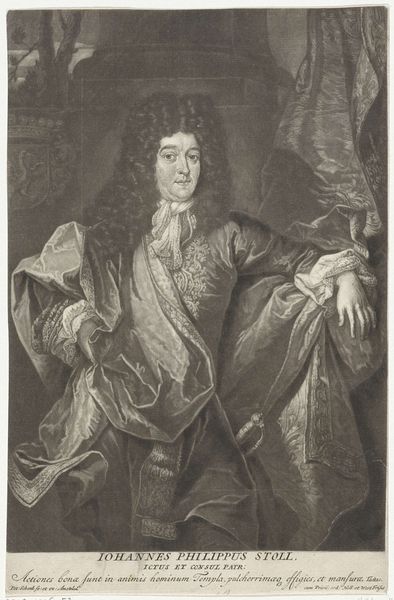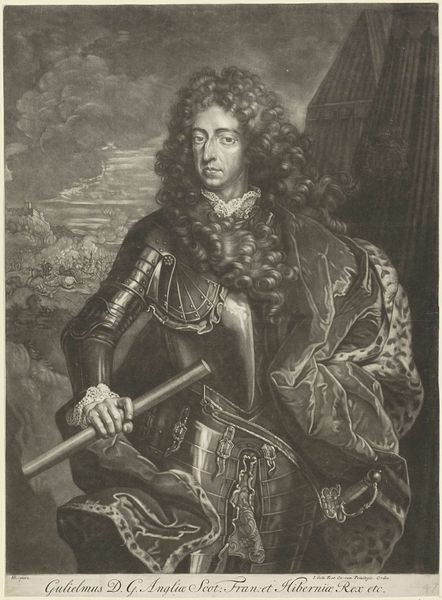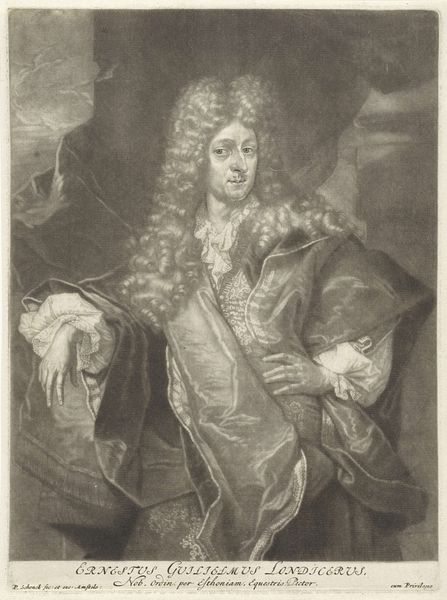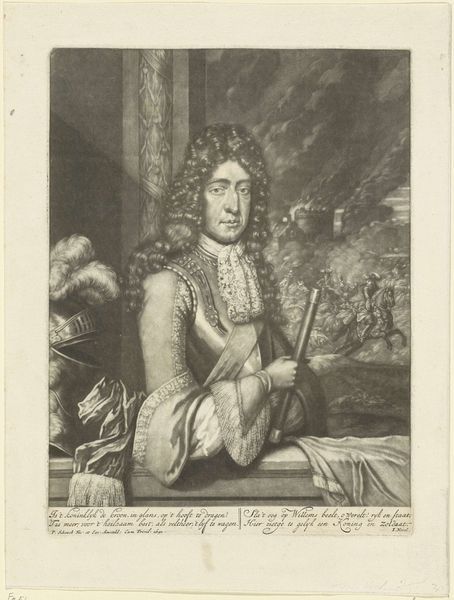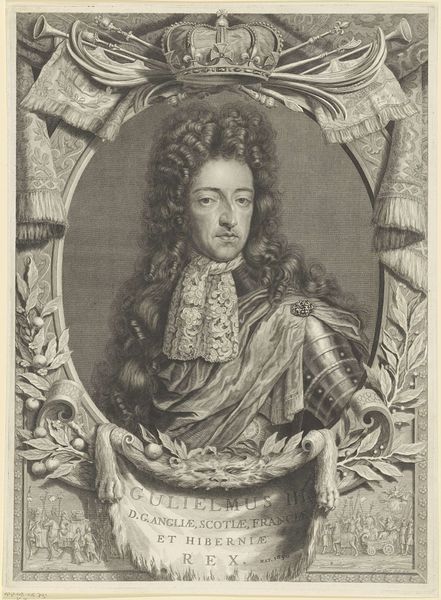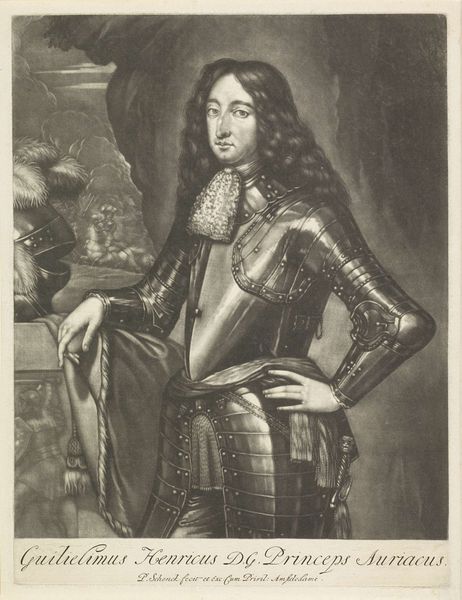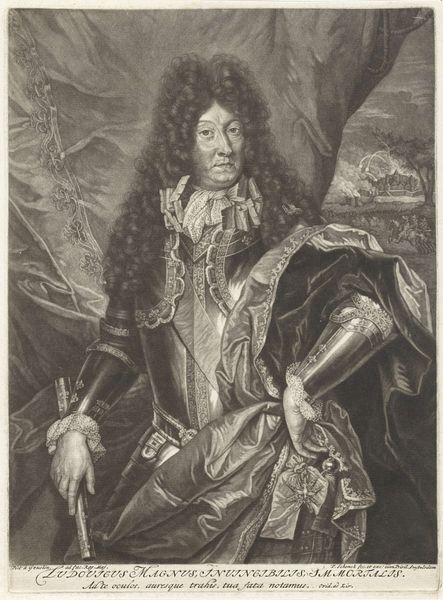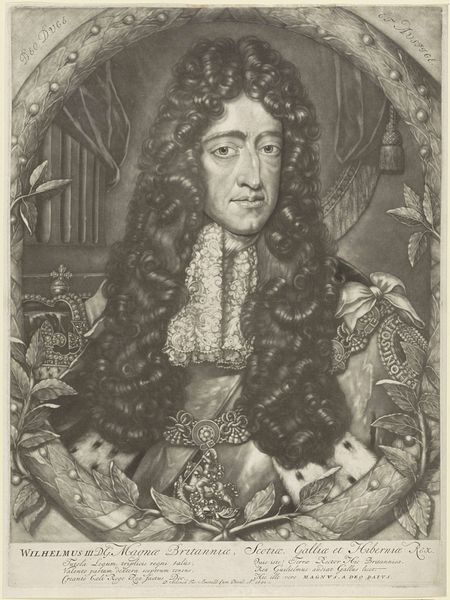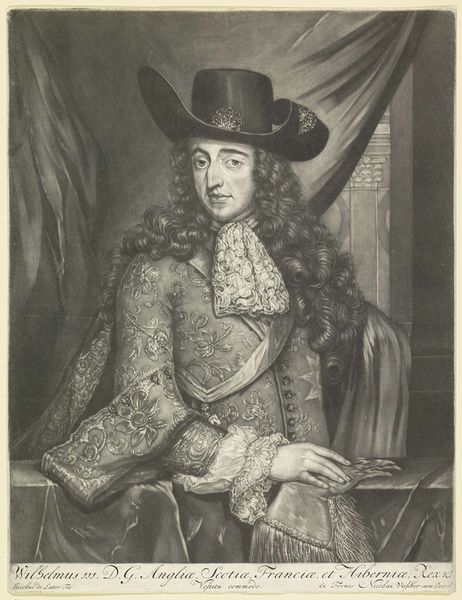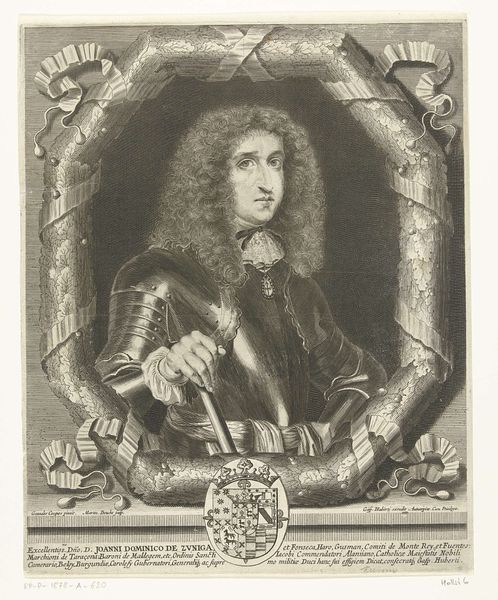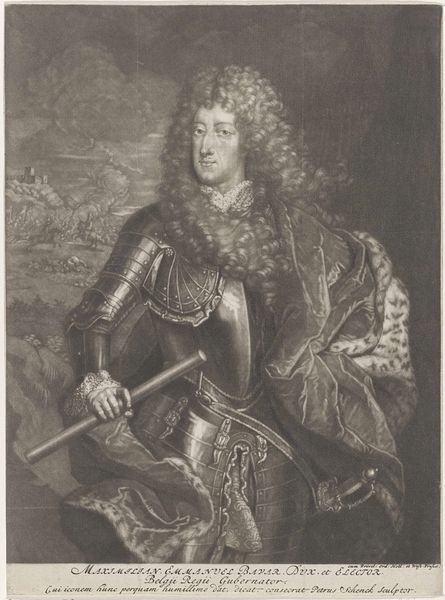
print, metal, engraving
#
portrait
#
baroque
# print
#
metal
#
charcoal drawing
#
history-painting
#
engraving
Dimensions: height 238 mm, width 250 mm
Copyright: Rijks Museum: Open Domain
Curator: Looking at this Baroque portrait of Willem III, Prince of Orange created between 1688 and 1711, one is immediately struck by the density of its symbolism. Editor: Indeed, the immediate impression is one of immense, calculated power. The somber tones contribute to a sense of weightiness, doesn't it? There's something almost suffocating about the formality of it all. Curator: Well, let's delve into some historical context. Pieter Schenk rendered this portrait during William's reign. This work exemplifies how political power utilized visual representation. William, remember, came to the English throne in the Glorious Revolution. Reproducing images of the monarch visually disseminated and legitimized this relatively new authority across England and the Dutch Republic. Editor: You see the orb and scepter there, traditional emblems of monarchy. Then you also get his personal heraldry subtly woven into his garb, signaling lineage and a kind of divine endorsement of his rule. The cascade of lace, and, of course, the ermine—all whispering of opulence and dominance. Curator: Right. The very act of producing such engravings in multiple copies made the King’s image available to a broad public. These prints had a circulation that painted portraits, inherently unique, did not. That accessibility changes how power interacts with the public. Editor: I am also wondering, though, about what all that ornament *hides*. Perhaps a sense of insecurity is underneath. Look at the positioning of his hands—almost deliberately posed. Is this really confidence, or is something being masked? Curator: An interesting perspective, certainly! What stands out to me is the shrewd use of engraving as a tool of political messaging, a function that art, throughout the centuries, has often performed. Editor: Well, this artwork reminds us that images don’t simply reflect reality; they actively create and shape our understanding of the world around us. Curator: Precisely. Studying images such as this, we can find many hidden histories, embedded in its very presentation.
Comments
No comments
Be the first to comment and join the conversation on the ultimate creative platform.
